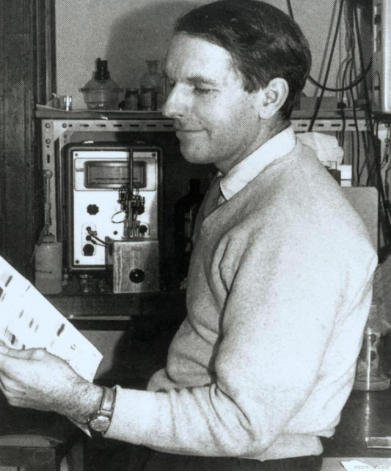November 10, 2020
Tag:
The chemistry of peptides has gone through a glorious course for more than a hundred years.
Emil Fischer began peptide synthesis experiments in 1902, when there was too little expertise at the level of peptide synthesis and progress was very slow.At that time, benzoyl was selected for synthesis, acetyl protection, removal was very difficult, and it was easy to cause peptide chain cracking.
In 1932, Max Bergmann et al. began to use benzyloxycarbonyl (Z) to protect the a-hydroxyl group, which can quantify resin adsorption under the standard of catalytic hydrogenation or hydrobromic acid. Only then did peptide synthesis begin to have some development trends.
In the 1950s, along with the discovery of more and more bioactive peptides, the research on organic chemical synthesis and its protective groups was greatly promoted, so the research results in this link were also very rich and colorful. Many bioactive peptides were synthesized, including oxytocin, insulin glargine and so on.

This provides an experimental and theoretical basis for the emergence of solid-phase synthesis methods later.It was also at this stage that Fred Sanger invented the amino acid sequence determination method and won the 1958 Nobel Prize for Chemistry.(He later invented DNA sequence detection methods and won the Nobel Prize for Chemistry again in 1980, becoming two scientists who have won the Nobel Prize for Chemistry so far.)
In 1963, Merrifield proposed the solid-phase peptide synthesis method (SPPS), a landmark synthetic method in peptide chemistry.As soon as this method came out, it has become a common method of peptide synthesis due to its convenient and rapid synthesis, but also brought a revolution in organic synthesis, and became a new discipline - solid-phase organic synthesis (SPOS).(Merrifield also won the 1984 Nobel Prize for Chemistry.)
It was also Merrifield's repeated screening that eliminated the use of benzyloxycarbonyl (Z) on solid phase.Boc was initially used to protect the alpha-amino group and was used in solid-phase peptide synthesis, which can be quantitatively removed under acidic conditions, and the reaction is usually rapid and complete within 30 minutes.Since the amino acid side chain protection group in the tert-butoxycarbonyl (Boc) method is mostly based on benzyl (Bzl), it is also known as the Boc-Bzl strategy.

Meanwhile, Merrifield invented a di automatic peptide synthesizer in the late 1960s and synthesized a bioprotease, ribonuclease (124 amino acids).Subsequent studies on peptide chemistry focused mainly on solid-phase synthetic resin, peptide condensation reagents, and amino acid protecting groups.
In 1974, LouCarpino first used 9-fluorene methoxycarbonyl (Fmoc) to maintain the alpha-amino group, which can be quickly removed under the partial base standard and reacted thoroughly in 10 minutes.Because of its mild reaction standard and rapid application, tert-butoxycarbonyl (Boc) was replaced by tert-butoxycarbonyl (Boc) in the 1980s, which became a common way of generating solid-phase peptide.The backbone of amino acids in this way is mostly based on tert-butyl (tBu), and thus becomes a Fmoc-tBu countermeasure.
In addition, fruitful results have been achieved in peptide synthetic resin, condensation reagents and their amino acid maintenance, including the orthogonality and maintenance of amino acids for the generation of cyclic peptides.
In the 21st century, with the deepening of the scientific research of proteomics, the requirement of peptide generation is becoming higher and higher.Synthetic peptide sequences are growing, and have long been not limited to the coupling of amino acids. Many have been focused on the way of peptide labeling and modification and its protein structure and function to mimic the generation of peptides or protein generation. The technical team of Gutuo Biology is also helping the relevant teams to carry out technical research.This puts forward higher requirements for peptide generation technology.
If the original product information is reproduced, please indicate the source: "This article was first published from Go Top peptide Biotech Co., Ltd. (www.gotopbio.com)"


Contact Us
Tel: (+86) 400 610 1188
WhatsApp/Telegram/Wechat: +86 13621645194
+86 15021993094
Follow Us:




 Pharma Sources Insight July 2025
Pharma Sources Insight July 2025


